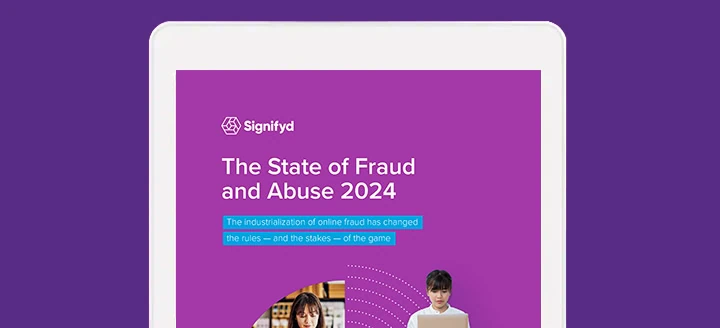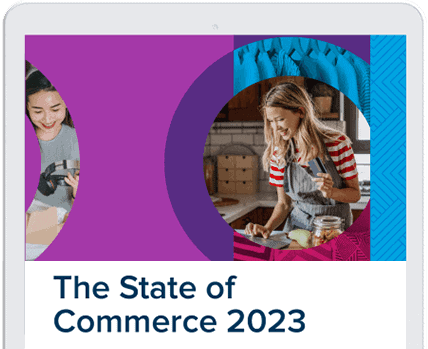Fraud or not, chargebacks cost merchants $200 billion per year
Chargebacks are a costly reality for many merchants, eating into profits and causing headaches for customer service teams. In 2021, chargebacks were estimated to cost merchants a staggering $125 billion globally, with that number expected to rise to $206 billion by 2025 (Juniper Research, 2021). To effectively prevent and manage these disputes, it’s crucial for merchants to understand the difference between fraud and non-fraud chargebacks.
Reviewed, revised and approved by Signifyd humans.
Nobody’s fault but mine: non-fraud chargebacks due to merchant error
While fraud and friendly fraud often take center stage in discussions about chargebacks, it’s crucial not to overlook the role of merchant error or negligence in non-fraud chargebacks. When a merchant fails to fulfill their obligations or provides subpar products or services, it can lead to legitimate chargebacks from dissatisfied customers.
One common scenario is when a merchant never ships out an order or ships an item that is broken or significantly different from what was described. If the merchant then fails to provide adequate customer service to resolve the issue, the frustrated cardholder may resort to filing a chargeback to obtain a refund.
Merchant error can also occur when a business does not clearly communicate its policies, such as return or cancellation procedures, leading to confusion and disputes. Additionally, technical issues on the merchant’s website, such as incorrect product descriptions or pricing errors, can contribute to non-fraud chargebacks.
To minimize chargebacks due to merchant error, businesses should prioritize providing excellent customer service, promptly addressing concerns, and offering fair resolutions. Clear communication about policies, accurate product descriptions, and reliable order fulfillment processes can also help prevent disputes.
Merchants must investigate the root causes of their chargebacks and identify any patterns related to merchant error. By taking responsibility for their mistakes and implementing corrective measures, businesses can reduce the occurrence of non-fraud chargebacks and maintain positive relationships with their customers.
When criminals strike: third-party fraud chargebacks or “true fraud”
Third-party fraud chargebacks, also known as identity theft or true fraud, occur when a criminal uses stolen credit card information to make unauthorized purchases. This can happen through various means, such as data breaches, phishing scams or skimming devices. In these cases, the legitimate cardholder disputes the charge, resulting in a chargeback.
The impact of true fraud on merchants can be severe. In addition to the immediate financial loss from the disputed charge, merchants may face increased chargeback rates, which can lead to higher processing fees and even the risk of losing their merchant account. True fraud can also damage merchant-customer relationships, as customers may lose trust in a business that has allowed fraudulent transactions to occur.
The wolf in sheep’s clothing: first-party fraud chargebacks or “friendly fraud”
Friendly or first-party fraud chargebacks, are disputes initiated by customers for reasons that may or may not involve criminal intent. Let’s take a closer look at the four most common sources of chargebacks categorized as friendly fraud.
Gaming the system: chargeback fraud
Chargeback fraud, in contrast, is a deliberate attempt by a customer to exploit the chargeback process for financial gain. In this scenario, a customer may purchase a product or service, then file a chargeback claiming it was never received or was unsatisfactory, while still keeping the item or benefiting from the service.
Family ties and forgotten transactions: the unexpected sources of chargebacks
Family fraud and forgotten purchases can also contribute to the chargeback chaos. Imagine a teenager going on a secret shopping spree with their parent’s credit card, or a cardholder forgetting about a subscription renewal and disputing the charge in confusion. These scenarios, where the purchase is made by a family member or acquaintance without the primary cardholder’s knowledge or consent, can lead to chargebacks.
Any and all of these kinds of friendly fraud chargebacks can have a significant impact on merchants. Like true fraud, these types of chargebacks lead to revenue loss, increased chargeback rates and strained customer relationships. Friendly fraud, in particular, can be frustrating for merchants, as it sometimes results from unintentional customer behavior rather than malicious intent.
Decoding the differences between fraud and non-fraud chargebacks
Distinguishing between fraud and non-fraud chargebacks is essential for merchants to develop targeted chargeback prevention and management strategies. By identifying patterns and characteristics unique to each type of chargeback, merchants can more accurately categorize disputes and take appropriate action.
Fighting back: an overview of prevention and management strategies
Merchants should consider implementing financial measures such as liability shift coverage, using fraud detection tools and improving communication with customers to reduce confusion and regularly monitoring disputes to gather evidence for representment.
Working with a chargeback management service can also be beneficial, as these providers have the expertise and resources to help merchants navigate the complex chargeback process and minimize losses.
The bottom line: understanding chargebacks is key
Understanding the differences between fraud and non-fraud chargebacks is helpful for merchants looking to protect their bottom line and maintain strong customer relationships. By recognizing the unique characteristics of true fraud, friendly fraud and the subsets of chargeback fraud, merchants can develop targeted strategies to prevent and manage disputes effectively. Implementing a combination of security measures, customer communication and professional support can help merchants reduce the costly impact of chargebacks and focus on growing their business.








